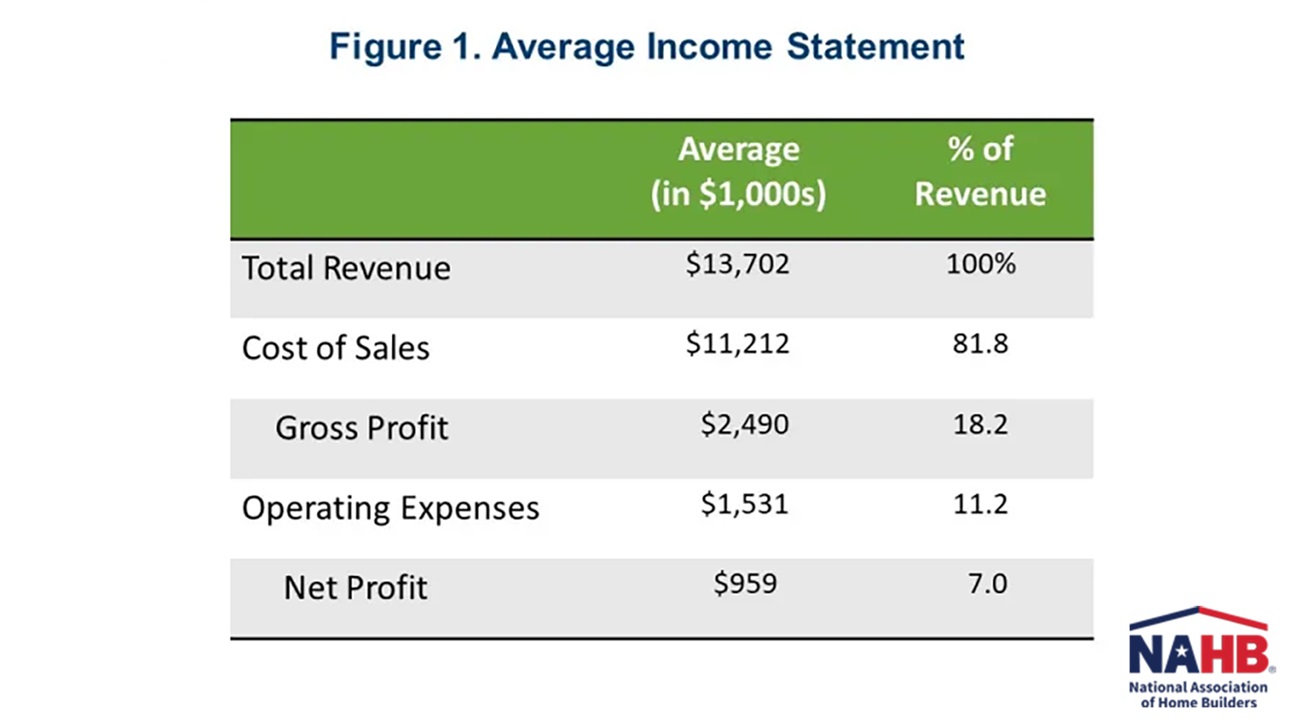Builders’ Profit Margins Fall as Balance Sheets Grow
Builders averaged a gross profit margin of 18.2% and a net profit margin of 7.0% in 2020, according to the latest NAHB Builders’ Cost of Doing Business Study. The nationwide survey of single-family builders revealed profitability benchmarks for the home building industry industry.
The study showed that, on average builders reported $13.7 million in revenue for fiscal year 2020, of which $11.2 million (81.8%) was spent on cost of sales (i.e. land costs, direct and indirect construction costs) and another $1.5 million (11.2%) on operating expenses (i.e. finance, sales and marketing, general and administrative expenses, and owner’s compensation).

Builders’ profit margins declined in 2020 for the first time since 2008. It is important, however, to put the latest results in context of the circumstances and realities of the time.
As a result of the COVID-19 pandemic, 2020 was not a normal year for any person or business in any part of the world. Like most businesses in the U.S., many builders were forced to shut down operations for a period of time, reinvent processes to ensure safety, provide health training to workers, limit visits to model homes, and adapt to office staff working remotely.
Builders in 2020 also had to quickly learn how to navigate the uncertainties of supply-chain disruptions that made many building materials significantly costlier and unavailable on-demand. And, as if those issues were not challenging enough, the industry’s chronic labor shortage worsened as fear of the virus spread among workers and subcontractors.
Rose Quint, NAHB's assistant vice president for survey research, provides more analysis in this Eye on Housing blog post.
Latest from NAHBNow
Jan 21, 2026
Single-Family Home Size Continues to DeclineThe market could see a leveling off of home size trends in 2026 as mortgage interest rates approach 6% on a sustained basis.
Jan 20, 2026
Plan Early for Summer Internship Season with NAHB ResourcesThe most effective internship programs don’t come together at the last minute. To help, NAHB offers the Internship Program Development Guide and Appendices to the Internship Program Development Guide.
Latest Economic News
Jan 20, 2026
New Single-Family Home Size Trends: Third Quarter 2025New single-family home size has been generally falling since 2015 as a response to declining affordability conditions. An exception occurred when new home size increased in 2021 as interest rates reached historic lows. However, as interest rates increased in 2022 and 2023, and housing affordability worsened, the demand for home size has trended lower.
Jan 20, 2026
Third Quarter 2025 Multifamily Construction DataAccording to NAHB analysis of quarterly Census data, the count of multifamily, for-rent housing starts increased during the third quarter of 2025. For the quarter, 119,000 multifamily residences started construction. Of this total, 114,000 were built-for-rent.
Jan 19, 2026
Soft Conditions for Single-Family Built-for-RentSingle-family built-for-rent construction fell back in the third quarter of 2025, as a higher cost of financing and increased multifamily supply crowded out development.
